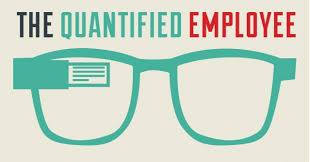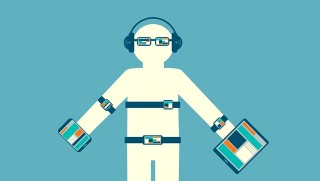Earlier this year I wrote about wearable devices and the various devices I have worn over the years, ending with my decision to purchase the Apple Watch. With this post I wanted to take the time to highlight how wearables could make the enterprise workplace better; more productive, safer and smarter. With computing devices getting ever smaller, faster and providing more data; wearable devices will provide a unique opportunity to make work easier for some.
Enterprises are already looking for appropriate use cases within their business that can take advantage of wearable devices.
Advances in consumer mobile devices, the availability of next-generation ruggedized enterprise devices and the possibility of wearables are providing an array of benefits from notifications/alerts, health tracking etc. Now that smart phones are here to stay, the gap between enterprise ruggedized devices and consumer devices is narrowing. So much so that the same next generation devices used in industries can run the same applications that millions of us enjoy on our personal phones. With such a parody of technology it should be an easy transition for wearables to become common in the workplace.
I wanted to explore a few areas where efficiencies could be gained:
Labor
Retail
Store associates could be notified of pending Buy Online Pick-up In-Store (BOPIS) orders, remove a task from the queue and mark it complete from a wearable watch device. Also, store associates could be notified of customers waiting to be helped in areas that require associate interaction to complete a purchase. Blinds, Carpet, Appliances, etc
Health
Accident Prevention and worker safety is a serious concern for some companies. Here are some statics from OSHA:
- 4,585 workers were killed on the job in 2013
- Out of 828 construction deaths:
- 302 resulted from Falls
- 84 – Stuck by Object
- 71 Electrocutions
- 21 – Caught-in/between
I do not have a practical analogy but what I think would be interesting is a wearable that provided a ‘spidey sense’ haptic feedback to warn of potential dangers. Kinetic is working on a cool wearable to reduce the injuries caused by workers lifting heavy objects.
How can wearables improve quality of life? The Microsoft Band already detects stress and there are rumors that the Apple Watch could detect glucose levels. A company with an aging workforce or a workforce tied to products known to lead to health problems could leverage wearables to provide feedback and education to make workforce health a priority. Being able to detect stress, anxiety, overwork, irregular breathing or heart problems could provide timely alerts and/or notifications that suggest a resolving action/behavior.
Rising healthcare costs are a real problem for large organizations and our nation as a whole. There are some of us that wake up every morning and live life like tomorrow is not promised. But there are some that care about what they eat, how active they are and overall longevity of life. For those people tracking their fitness and body composition, providing additional data points allows for healthcare premium rates. For those that need improvement, the same data can be used to provide a plan and show potential savings. Think Progressive Snapshot for healthcare insurance.
Contextual Awareness
With a combination of natural disasters and violent episodes happening in schools, responding to random tragedies is a job requirement. Office safety is sometimes over looked and not taken seriously even when training or information is being disseminated. Having a discrete way to notify administrators of a possible dangerous situation or knowing how to account for (and potentially communicate with) victims after a disaster could be improved upon with the use of wearable devices.
In retail, possibilities include a contextual based watch face that knows where I am in the store and provides only the data that I need (current sales information, recalls, what items are out of stock). Even clienteling applications that provide store associates with customer data could provide valuable insight when making purchases.
Another interesting development is exoskeletons. Although, they are not what you typically think of when discussing wearables. I find them extremely interesting and I am excited to see what the future holds.


